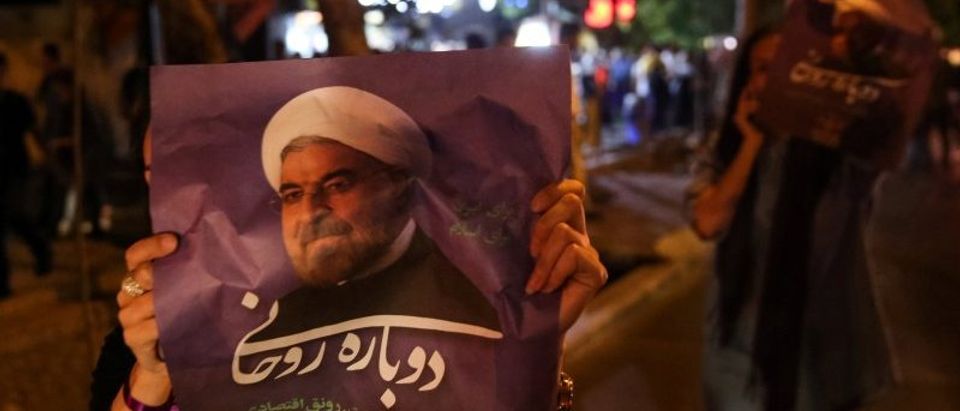On May 19, 2017, Incumbent President Hassan Rouhani won Iran’s election over his rival Ebrahim Raisi.While Supreme Leader Ali Khamenei, who is the chief decision maker in Iran, seems to have decided upon a policy of isolationism and exerting military power, directly or by proxy, throughout the Middle East.
Are there any chances of economic growth in Iran? Business opportunities for foreign companies and a revival of foreign investments, and what is the outlook for a reduction of risks in a trade with this country?
If the past is prologue, then the answer lies in the exceptional window of opportunity created during the first 4 years tenure of the current President Rouhani. During the past four years, Iran has benefited greatly from the lifting of international sanctions, and a rejuvenated effort to reestablish diplomatic and commercial ties between Iran and the West. From July 2015, when the nuclear agreement was signed, until the beginning of 2017, dozens of Western trade and diplomatic delegations visited Iran. Several hundred economic Memorandums of Understanding were signed, although rarely were they finalized, like a pending agreement for the sale of 118 Airbus planes to Iran for about $10 billion.
Three underlying forces were in play to reconcile Iran’s traditional economic system with that of the West.
The appetite of Iran’s 80 million-strong consumer market for western goods, a critical need for western investment and technology to rebuild Iran’s outdated infrastructure (for example Iran’s oil industry needs $200 billion of investment in the next five years), and the keenness of western companies that imagined Iran after the nuclear agreement to be the mythical city of El Dorado created an optimal political situation.
On the one hand, there was a president who was for two decades a key security official but in the eyes of the West was seen as a moderate. On the other hand, there was a consensus and political will by Western countries to reestablish ties.
The results, however, have not been pleasant. By 2016 the initial wave of signed agreements was put on the back burner and cooled down. Although oil exports reached pre-sanctions levels, the economic situation in Iran continues to disappoint, mostly due to an unfit legal structure, unfair practices and regulations, corruption, and a mismanaged economy.
Rouhani’s most important achievement was the decline of inflation to nearly 10%, but it also had a terrifying byproduct. According to government reports, the unemployment rate during this time climbed from 10% to 12.5%. Independent analysts believe, however, that it stands at 40%, which means Iran currently has 10 million unemployed people.
In addition, the country has suffered a bankruptcy tsunami that has swept away hundreds of businesses in the past two years, increasing the bankruptcy rate by 700%. Out of 31 private and governmental banks, at least 14 banks have gone bankrupt, but the government avoids publicizing it so as not to cause political and social turmoil. Also out of 20 pension funds, 16 funds have declared bankruptcy due to huge embezzlements and mismanagement.
Undoubtedly, the fact that major European banks refuse to provide finance for Iranian trade transactions, coupled with continuing US sanctions, is contributing to Iran’s economic failure. And then there is the case of Donald Trump who is unlikely to be any more lenient. The hidden reality, however, is that Iran’s internal barriers are more to be blamed for Iran’s economic crisis. These include lack of free market competition, mainly due to the monopoly by conglomerates affiliated to the Supreme Leader and the IRGC on a major chunk of Iran’s economy (affecting at least half of the GDP), the precariousness of the rule of law, the deterioration of human rights in Iran that deflates economic participation, and the high costs of military interventions in Syria, Yemen, and Iraq, not to mention the bankrolling of Hezbollah and other regional proxies.
It’s, therefore, safe to assume that prospects for Iran’s economic recovery and opening to the global markets are bleak regardless of who becomes Iran’s next president; rather it would need a complete change of Iran’s strategic political trajectory.
Mohammad Amin (@EconomieIran) is a senior research fellow at the Paris-based Foundation d’Etudes pour le Moyen-Orient, FEMO (Foundation for the Study of the Middle East). He has written several books and essays about the ruling theocracy, the transformation of Iran’s political economy under the presidency of Mahmoud Ahmadinejad, and the rise of Islamic fundamentalism in the Middle East region


